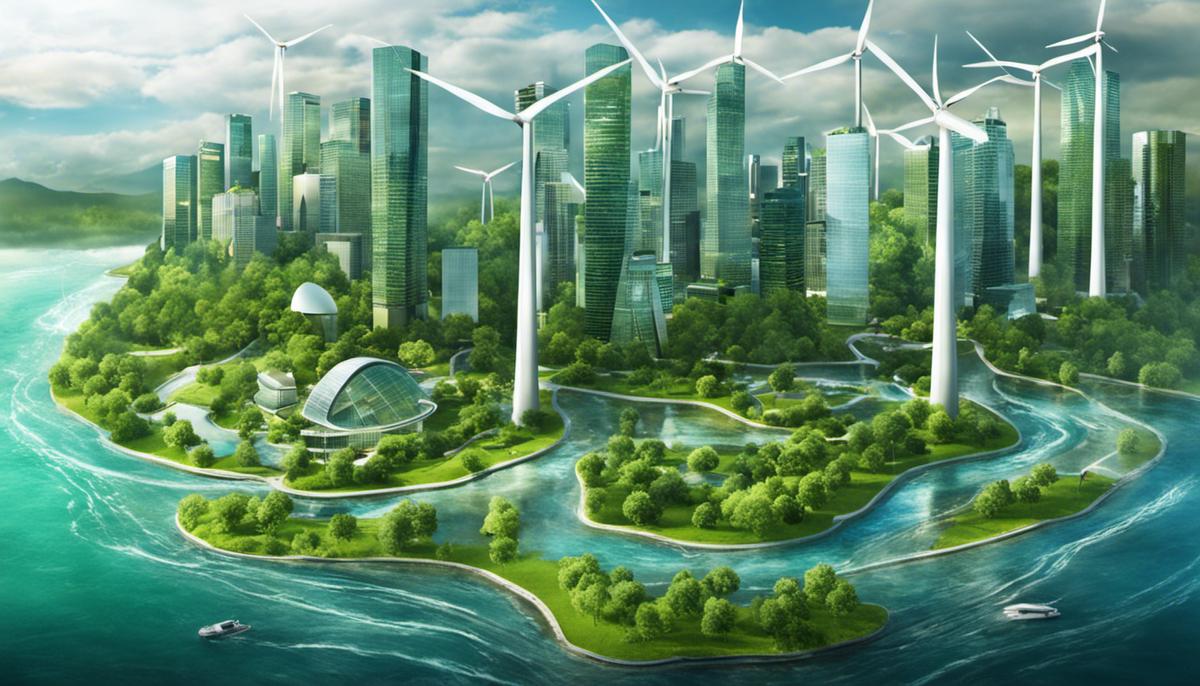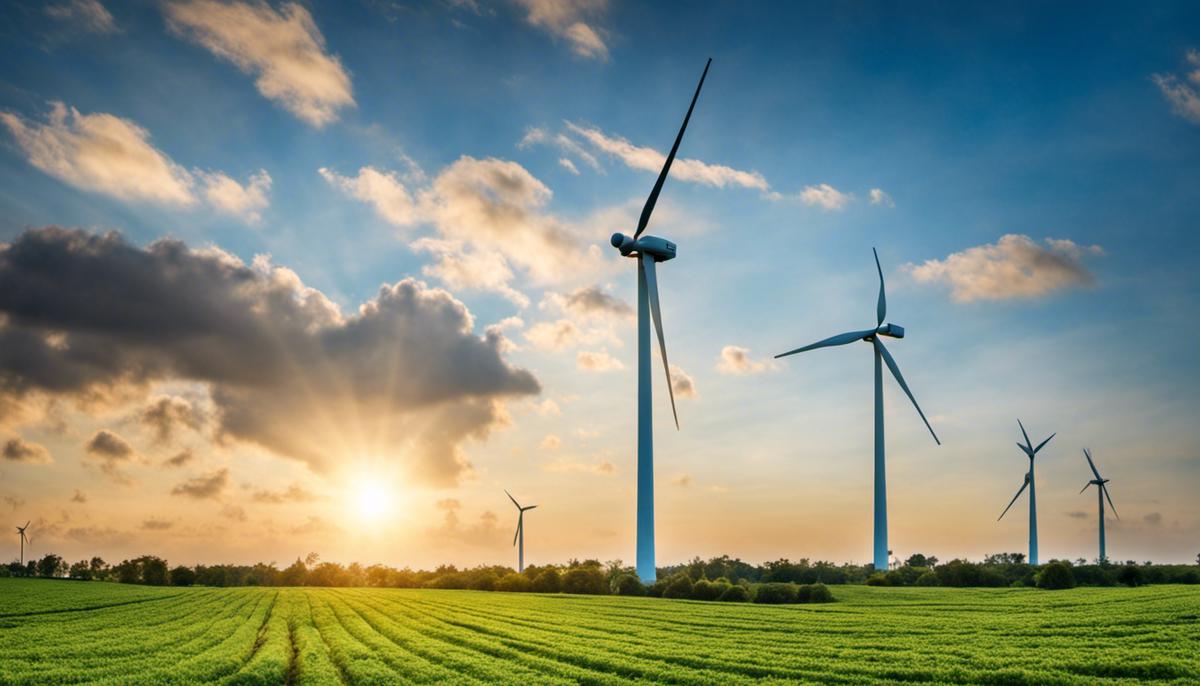We are at an unprecedented crossroads in human history, where both the rapid depletion of Earth’s natural resources and the acceleration of climate change are posing severe challenges. On the positive side, there exists a pervasive awakening and concerted efforts towards eco-friendly approaches, particularly in the realm of technology. Our analysis delves into the emergence of eco-friendly technology, tracing its roots from inception to its current state. It also examines some of the revolutionary tech innovations that not only aim to protect our environment but are also designed to promote sustainable growth. Equally important, we delve into the broader implications and current impacts of these green technologies on diverse industries as well as their future prospects.
The Emergence of Eco-Friendly Technology
Scientifical Appreciation of Eco-Friendly Technology
In any form of academic or scientific discourse, it is hardly disputable that the emergence of eco-friendly technology has dramatically redefined our stance towards environmental sustainability. It is not merely a trend, but a much-needed revolution stimulated by the urgent necessity for global conservation efforts. Through decades of painstaking research and study, the field of environmental science has made significant strides in harnessing technological advancements to fortify sustainable strategies.
Primarily, the ideation of eco-friendly technology is borne out of the increasing awareness about the catastrophic effects of human activities on the environment. Traditional industrial and infrastructural pursuits, once deemed as essential drivers of human progress, are now recognized for their insalubrious impacts on the environment. These repercussions emphasize the necessity to reform traditional practices and accelerate the adoption of eco-friendly alternatives.
Foremost among these novel revolutions is the advent of renewable energy technology. Advancements in solar, wind, and geothermal technology have transformed the way we harness, utilize, and perceive energy. Instead of relying on finite and environmentally detrimental fossil fuels, humanity is gradually shifting towards renewable and sustainable power sources. Investments in research, technology, and infrastructure have exponentially increased, pushing the boundaries of renewable energy capabilities to new frontiers.
In terms of transportation, electric vehicles and hybrid technology have begun to redefine traditional norms. With the development of efficient and durable batteries, hybrid and electric vehicles are steadily superseding gasoline-powered vehicles. Through this remarkable shift, it’s plausible to envision a future where vehicular emissions will be radically reduced, contributing vitally to global efforts combating climate change.
On a smaller yet equally impactful scale, our homes and buildings are gradually transforming into efficient, self-sustaining ecosystems owing to eco-friendly technology. From energy-efficient appliances to smart home systems that optimize usage patterns, technology is making substantial leaps in the race towards attaining environmental sustainability.
In essence, the notable shift towards eco-friendly technology is a radical representation of our evolution in scientific consciousness. It signifies our renewed recognition of the importance of co-existing with nature, rather than exploiting it unrestrainedly. This revolution hasn’t merely reformed our technological endeavors, but it has, indeed, transformed our philosophical standpoint towards our role in the longevity and preservation of our environment.
While the road towards environmental sustainability may be long and fraught with challenges, the present surge in eco-friendly technology provides an optimistic beacon of light. It kindles faith in our collective scientific capability to reverse ecological damage and devise sustainable practices for the benefit of generations to come. Humans stand, poised on the brink of a revolutionary future, where technology harmoniously aligns with environmental sustainability – a future that was once deemed a wistful whim, now emerges as an achievable reality.

Pivotal Eco-Friendly Tech Innovations
Sustainable Agriculture Technologies: Averting an Impending Calamity
With the world’s burgeoning population, the demand for food supply escalates. Still, to cater to these exponential requirements while exerting minimum environmental impact, the implementation of sustainable agricultural technologies becomes integral. Precision farming is a quintessential example in this arena. By leveraging sophisticated technologies like GPS, satellite imagery, and sensor technology, farmers can optimize productivity, lower the cost and considerably reduce harmful impacts on the ecosystems.
Precision farming is integral in achieving stringent resource efficiency, matching farming inputs such as water and fertilizer to crop demands with razor-sharp accuracy. AI-driven crop management assist farmers with predictive analyses for yield forecasting and crop rotation strategies, thereby promoting biodiversity and soil health. Furthermore, sustainable farming tools, including vertical farming, hydroponics, and aquaponics, revolutionize agriculture in urban settings, reinforcing a move toward local sourcing that reduces the carbon footprint.
Bioremediation: A Biological Approach Towards Tackling Pollution
Bioremediation, an exciting eco-friendly innovation, employs microbes, fungi, and plants to clean up contaminated environments naturally. Aqua venture companies have already experimented with bacteria that can mitigate oil spills, absorbing pollutants and magically turning them into harmless by-products. By harnessing the innate capabilities of organisms, bioremediation paves the way for non-invasive clean-up of contaminated soil, ground water, and marine environments.
The Next-Gen Innovations: Passive Homes and Circular Economies
Passive homes, marked by superior energy efficiency, significantly downsize the need for external heating or cooling. Using the principle of solar gains coupled with superior insulation, these homes manage to maintain comfortable temperatures across seasons while consuming approximately 90% less energy than traditional homes.
The crux of a circular economy is in the creative rethinking of consumption: rather than focusing on the acquisition of new products, the end-goal is the optimum utilization of existing resources. The transition to a circular economy model encourages the conservation of resources, promotes recycling, and reduces waste generation from the industrial sector.
Harnessing the Ocean’s Power: Wave Energy
Oceans cover more than two-thirds of the earth’s surface. The immense energy potential carried by ocean waves remains a largely untapped source, with the prospects of wave energy conversion quite promising. This process entails the harnessing of wave motion to generate electricity, a solution not only renewable but also less susceptible to seasonal fluctuations.
In conclusion, these eco-friendly technological innovations attest to the indomitable human spirit to conserve our planet narratives. These technologies, supplemented with comprehensive policy support and public acceptance, must play a central role in our society’s ambitious stride towards environmental sustainability.

The Impact of Eco-Friendly Technology on Industries
With the onward march of eco-friendly technology, profound changes have been witnessed in industries far and wide, transcending the boundaries of merely energy or transport sectors. The agricultural sector, for instance, stands as a testament to this tech-infused revolution. Precision farming has emerged as a phenomenal technology-led evolution, leveraging advancements such as GPS, satellite imagery, and sensors to streamline agricultural processes. With a meticulous analysis of weather predictive patterns, soil mapping and pest proliferation data, it yields optimized, sustainable farming practices, substantially reducing environmental burden.
Parallel to this, AI-driven crop management models are gaining traction. These innovative systems leverage the potent combinational power of artificial intelligence and agronomic sciences to predict crop yields accurately, enabling better logistics and planning while minimizing waste and resource utilization.
The agriculture sector is also witnessing a welcome shift towards more contained extensions of farming – hydroponics and aquaponics. These systems eliminate soil use and dramatically cut back on water necessity, ensuring resource efficiency while eliminating harmful land-based agricultural runoffs. Indeed, vertical farming, an urban-centric sustainable farming method, underscores a futuristic approach to agriculture, driving maximum yields from minimal footprints.
The remedy to environmental degradation also lies in harnessing technology for remediation purposes. Bioremediation, a cutting-edge eco-friendly technology, employs the inherent capabilities of biological entities like microbes, fungi, and plants for environmental rejuvenation, effectively cleaning up contaminated environments. Undeniably, these technologies encapsulate our scientific ingenuity to buttress the planet’s regenerative capabilities.
Plunging into the realm of our built environment, the concept of passive homes surfaces, a beacon of superior energy efficiency. These advancements manifest themselves through highly insulated structures, energy-efficient windows, plus heat recovery and ventilation systems, all working towards radiant environmental sustainability.
Further extending the ambit of sustainable living is the idea of circular economies. It propels a drastic rethinking of consumption, where resources are essentially conserved, and waste is radically reduced, thereby making consumption sustainable and circular. The paradigm symbolizes a reconceptualization of industrial practices, making resource optimization the core of industrial efficiency.
In the wider perspective of renewable energy, wave energy emerges as an enticing prospect for future energy sustenance. With its nearly constant availability and less susceptible fluctuations, it holds a promising potential to supplement our energy needs effectively, without straining the planet’s resources.
Inevitably though, the success in achieving environmental sustainability through these technologies hinges on the right mix of comprehensive policy support and public acceptance. Thus, along with the thrilling technological advancements, it is pivotal to conscientiously cultivate a groundswell of support for this sustainable revolution. The combined synergy of these intelligent technologies, invigorated by collective public endorsement and superior policy orchestration, holds the promise to usher in an era of profound environmental progress.

The Future of Eco-Friendly Technology
Unquestionably, the future is surging, propelled by an innovative eco-friendly technology era that promises a harmony between our technological strides and the health of our planet. As we meander through this transformative journey, it is pertinent to acknowledge the significant potential of novel technologies, regulatory movements, and worldwide trends that could influence the destiny of eco-friendly technology.
An emergent technology that possesses immense potential is the Internet of Things (IoT). This complex web of interconnected devices can facilitate the judicious use of resources and substantially reduce wastage. When integrated with existing eco-friendly technologies, IoT could magnify their effectiveness. For instance, in smart buildings, IoT can optimize energy utilization by autonomously controlling heating, lighting, and air conditioning based on occupancy, time of the day, and outside weather conditions. Such an assimilation of technology could lead to substantial reductions in energy consumption and carbon emissions.
Green nanotechnology is another burgeoning domain that holds significant promise, fostering the development of clean technologies that minimize potential environmental and human health risks. It focuses on manipulating materials at the atomic and molecular levels to create more efficient and environmentally benign products. With further advancements, green nanotechnology could offer game-changing solutions across different industries, including renewable energy, waste management, and water treatment.
On the legislative front, regulatory bodies are increasingly recognizing the need for and impact of green technologies. They have the potential to steer us toward a future where technology and the environment aren’t at odds. Green regulations are expected to become more stringent, aiming at extensive incorporation of eco-friendly technologies in industrial practices. Reinforced emission standards, heightened directives for corporate sustainability, and government-led incentives for green technology adoption may become commonplace.
Internationally, a paradigm shift is discernible toward a green economy that counts environmental impact as an integral part of growth metrics. Nordic countries like Sweden and Denmark are leading examples of such change, with the efficient incorporation of wind energy and rigorous waste management policies. These countries exemplify an ideal illustration of technology modernization aligning with ecological mindfulness.
In addition, international collaborations on eco-friendly technology research are expected to gain momentum. These multicultural, interdisciplinary alliances can offer an endearing cauldron of diverse thoughts and influences. Such collaborations can ensure effective widespread adoption and foster innovation by encapsulating unique regional environmental challenges and needs.
Portending a future where technology exists in harmony with nature isn’t a utopian dream anymore, it’s a potential reality facilitated by advancements in eco-friendly technology. With an ever-evolving torrent of new technologies, proactive regulations, and a shifting global consciousness towards the environment, the direction is clear — technology will not just cease to harm; it shall heal, it shall coexist.

The future of eco-friendly technology holds immense potential to shape our societies towards sustainable development. It has and will continue to demonstrate a crucial balancing act between technological advancement and environmental protection. Despite the challenges that industries face in incorporating these solutions, the continuing advancements and forecasted innovations clearly indicate a resolute march towards a sustainable future. Our collective responsibility lies in embracing these green technologies, supporting ongoing research, and advocating for environmentally-informed policies. Thus, eco-friendly technology will keep evolving, fostering greener industries and laying the foundation for a habitable planet for generations to come.
